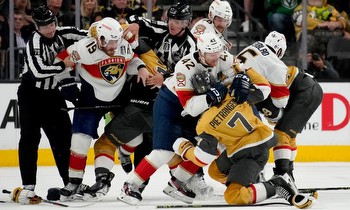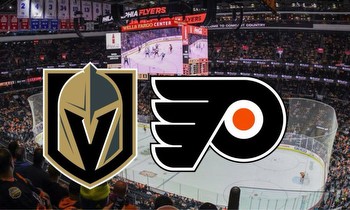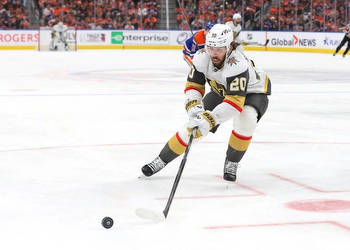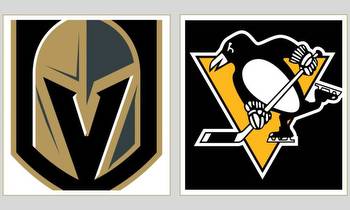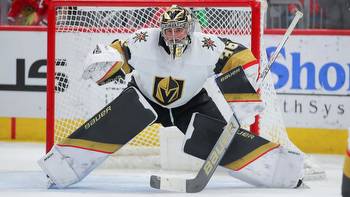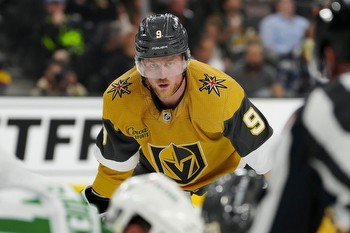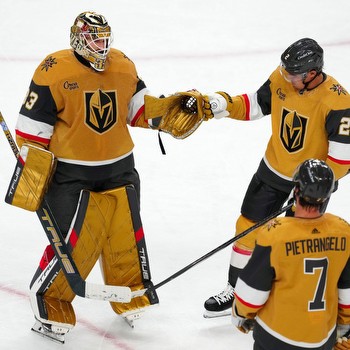Golden Knights contracts: Which players are providing the most value?

LAS VEGAS — In late June, the NHL’s best paraded across the stage inside Nashville’s Bridgestone Arena at the league’s awards show. The only Golden Knights to grace the stage that night were defenseman Zach Whitecloud and executives Kelly McCrimmon and George McPhee, who showed off the Stanley Cup.
Outside of that cameo, the Golden Knights — who had just steamrolled through the playoffs to a title — didn’t make an appearance in the awards ceremony. Not only were there no award winners for Vegas, there wasn’t even a finalist. Those awards are voted on at the end of the regular season, long before Vegas’ dominant Cup run, but looking at future odds, there isn’t a single Golden Knights player inside the top 10 in odds for an individual award next season either.
The lack of individual standouts speaks volumes about how complete the team was to win it all last season. A big part of that is how efficient many of the contracts were. Despite straddling the salary cap ceiling for quite some time, the Golden Knights don’t have many bad contracts on the books.
This week, The Athletic’s Dom Luszczyszyn ranked every team by contract efficiency using his GSVA model, and Vegas ended up seventh. From star players with very reasonable cap hits, to a few depth players outperforming their minimal salaries, there’s plenty of value up and down the lineup for Vegas. Even the contracts ranked least-efficient by Luszczyszyn’s model are far from the albatrosses some teams carry.
To delve even deeper into the Golden Knights’ salary cap efficiency, here are the five deals providing the most value.
Vegas has made plenty of successful moves in its short existence, but perhaps none shrewder than the trade for Stephenson and the contract extension shortly after. The Golden Knights gave up only a fifth-round pick to Washington to acquire Stephenson on Dec. 3, 2019. Since then, only Jonathan Marchessault has registered more points for the team.
When Vegas acquired Stephenson, he was in the final year of a one-year deal signed with the Capitals that carried a cap hit of only $1.05 million. After putting up 22 points in only 41 games with the Golden Knights following the trade, he was obviously due for a raise, and Vegas gave him one with a four-year contract worth $2.75 million per season. At the time, it seemed like fair value for a player who had performed in a bottom-six role most of his career but showed glimpses of being more than that.
It turned out to be a sensational deal for Vegas, as Stephenson has emerged as a top-line center and has consistently been one of the team’s most important players over the last four seasons. He’s the second-leading points-producer and has the third-highest projected value of any forward, behind only Mark Stone and Jack Eichel, but is the seventh-highest paid forward. His speed in transition backs defenders off to create room for his playmaking linemates, and his strength on the puck extends plays in the offensive zone.
The bad news is that Stephenson’s deal expires next summer, when he’s set to his unrestricted free agency for the first time in his career. After his play over the last few seasons, including a brilliant stretch to help win the Cup, he’ll be due for another sizable raise.
The contract that actually provides the most value to the team, according to Luszczyszyn’s model, is that of Theodore. His sky-high projected value of $10 million is the highest on the team. With an actual cap hit of $5.2 million, the defenseman projects to give Vegas plenty of value over the next two seasons.
I will start by saying I believe the model is a bit high on Theodore’s value. He’s been excellent, and his on-ice metrics are always stellar, but to say he’s been significantly more valuable than Alex Pietrangelo is just not true. Perhaps this will change as Pietrangelo enters his mid-to-late 30s, but over the last three seasons, he’s taken on much tougher minutes and assignments, which is likely the biggest contributing factor in his on-ice metrics not quite matching Theodore’s.
Having said that, Theodore is still an excellent contract at only a $5.2 million cap hit. Over the last three seasons, he’s been on the ice for more even-strength goals scored than any player on the team (178), while allowing only 128 during that span. The Golden Knights consistently dominate possession when Theodore is on the ice, largely due to his excellent skating and puck-moving abilities that lead to easy breakouts and transition opportunities the other way.
Theodore will turn only 28 on Thursday, and with two years still remaining on the deal, he’s on track to provide tons of value.
Strong defending was the pillar the Golden Knights’ championship team was built around, so it’s no surprise that most of the players on the blue line are providing value above their cap hit. McNabb is one of the most under-appreciated players on the team and possibly around the NHL, but not by his teammates and coaches, who sing his praises at every opportunity. He carries a cap hit of only $2.85 million but is one of the most consistent performers on the roster.
McNabb doesn’t light up the scoreboard, but he’s an effective defender, penalty-killer and a terror for opposing forwards attempting to gain the offensive blue line. A member since the inaugural season, McNabb is the franchise leader in hits (1,079) and blocks (901). He’s also a quiet leader in the dressing room who every young defenseman that has made their debut for Vegas credits for helping them into the NHL.
Carrier has been an important piece of the puzzle since Year 1, and that was before his scoring outburst. He had never reached double-digit goals in his first six NHL seasons, but after pouring in a career-high 16 goals in only 56 games last season, he’s now projected to outplay his contract considerably.
With an actual cap hit of only $1.4 million this season, Carrier’s projected value is $3.7 million for a $2.3 million surplus. Add in all of the intangible benefits he brings, like the energy and physical tone his line sets for the rest of the team on a nightly basis, and Carrier’s contract is one of the best on the team.
As with Stephenson, Carrier’s contract expires at the end of the upcoming season. If he comes close to matching his 16 goal total from 2022-23, he’ll be due for a considerable raise. Even without the elevated production, he’s well worth his current salary for everything else he does.
No name on Luszczyszyn’s list piqued my interest more than Dorofeyev. The 22-year-old rookie winger was highly productive in a very limited timeframe last season, scoring seven goals in just 18 games. With such a limited sample, it’s difficult to project what Dorofeyev could do over a full 82 game season, but Luszczyszyn’s model has him slated as a $3.8 million value (in line with players like Carrier, Ivan Barbashev and Nicolas Roy).
If Dorofeyev provides that type of production, the Golden Knights will be ecstatic. He signed a one-year deal this summer with a cap hit of only $825,000. If he turns into an every-night player, he would be an excellent addition to an already deep forward group. With Smith’s departure, Dorofeyev could push to play alongside Karlsson. If that happened, he could easily score enough to reach that projected value.
Overall Vegas’ contract situation is good, with 14 of the 19 skaters projected to out-perform their cap hits. The biggest issue is the length of those valuable deals. With several set to expire after this season, it could be tough to retain all (or most) of them beyond that, especially if they continue playing the way they have. Here is the full list of contracts, with the projected values according to Luszczyszyn.


